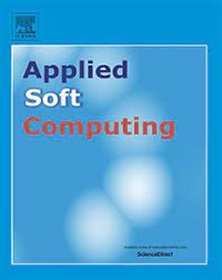Sentiment analysis and emotion recognition in social media: A comprehensive survey
IF 7.2
1区 计算机科学
Q1 COMPUTER SCIENCE, ARTIFICIAL INTELLIGENCE
引用次数: 0
Abstract
Sentiment Analysis (SA) and emotion recognition is the fundamental dialogue system that recently gained more attention. It is applied in many scenarios like mining the opinions of the speaker’s conversation and enhancing the feedback of the robot agent. Furthermore, the live conversation is used to generate the talks through certain sentiments to enhance the human-machine interaction. This survey focuses the researchers on handling the SA and classification of various sentences in social media by reviewing various approaches. This analysis explains the 50 research articles from different methods used for SA and sentiment classification in social media. Finally, the evaluation of this survey is performed based on the publication year, various approaches, evaluation metrics, and tools. Moreover, the collected 50 research papers are categorized into different techniques, such as deep learning (DL) based methods, machine learning (ML) based methods, lexicon-based methods, hybrid-based methods, and dependency-based methods. Therefore, from this survey, it is clearly shown that the DL-based method is the most utilized approach in many research papers. Similarly, python is the most used tool for SA and classification, and real-time dataset is a commonly used dataset for SA and classification. Likewise, accuracy is repeatedly employed in metrics with the highest value.
情感分析(Sentiment Analysis,SA)和情感识别是近来备受关注的基本对话系统。它被应用于许多场景,如挖掘说话者对话中的观点和增强机器人代理的反馈。此外,实时对话还可用于通过特定情感生成对话,以增强人机交互。本调查通过回顾各种方法,重点关注研究人员如何处理社交媒体中各种句子的SA和分类。本分析介绍了社交媒体中用于 SA 和情感分类的不同方法的 50 篇研究文章。最后,根据发表年份、各种方法、评价指标和工具对本次调查进行了评估。此外,收集到的 50 篇研究论文被分为不同的技术,如基于深度学习(DL)的方法、基于机器学习(ML)的方法、基于词典的方法、基于混合的方法和基于依赖的方法。因此,这项调查清楚地表明,基于深度学习的方法是许多研究论文中使用最多的方法。同样,python 是 SA 和分类中使用最多的工具,实时数据集是 SA 和分类中常用的数据集。同样,准确率也是多次使用的最高指标。
本文章由计算机程序翻译,如有差异,请以英文原文为准。
求助全文
约1分钟内获得全文
求助全文
来源期刊

Applied Soft Computing
工程技术-计算机:跨学科应用
CiteScore
15.80
自引率
6.90%
发文量
874
审稿时长
10.9 months
期刊介绍:
Applied Soft Computing is an international journal promoting an integrated view of soft computing to solve real life problems.The focus is to publish the highest quality research in application and convergence of the areas of Fuzzy Logic, Neural Networks, Evolutionary Computing, Rough Sets and other similar techniques to address real world complexities.
Applied Soft Computing is a rolling publication: articles are published as soon as the editor-in-chief has accepted them. Therefore, the web site will continuously be updated with new articles and the publication time will be short.
 求助内容:
求助内容: 应助结果提醒方式:
应助结果提醒方式:


